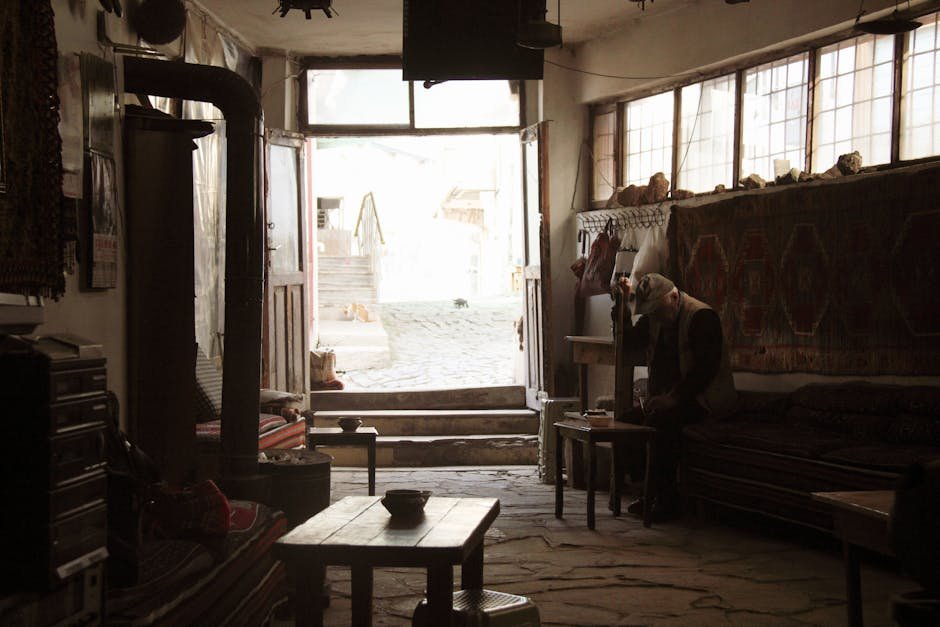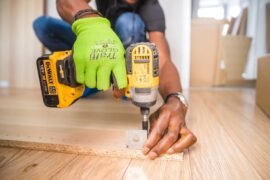Remodeling mobile homes presents a unique set of challenges, especially when aiming to preserve the original character while updating the aesthetic. One of the biggest considerations is the wall paneling, a common feature in older mobile homes. Removing it can be messy and costly, potentially exposing hidden electrical or plumbing issues and requiring extensive drywall work. Fortunately, there are several creative strategies for remodeling mobile homes without removing the original paneling, saving time, money, and potential headaches. This guide explores those methods in detail, offering insights into surface preparation, painting techniques, decorative solutions, and structural reinforcements, all while keeping in mind the specific needs of mobile home construction. Its about the journey, not just the destination, after all. Also you might want to consider your energy rating.
Understanding Mobile Home Paneling
The paneling found in mobile homes is typically thin, often made of vinyl-covered gypsum or plywood. It's designed for lightweight construction and ease of installation, but it isn't always aesthetically pleasing by today's standards. Unlike drywall, paneling has seams that are often visible, creating a distinct look. Before undertaking any remodeling project, it's crucial to understand the composition of your paneling and its structural integrity. Is it really that bad? Think about this before you tear into it. You also might consider using local mobile home renovator who may be able to assist.
- Material Identification: Determine whether your paneling is vinyl, plywood, or a different material. This will affect your choice of primers, paints, and adhesives. Older mobile homes, for instance, may have asbestos-containing materials, requiring professional assessment and remediation if disturbance is planned.
- Structural Assessment: Inspect the paneling for any water damage, warping, or loose sections. Addressing these issues is essential before applying any new finishes. Repairing any damage will save you time in the long run.
- Seam Evaluation: The seams between panels are a common eyesore. Consider how you plan to conceal or minimize their appearance, whether through filling, texturing, or decorative elements.
Surface Preparation: The Key to Success
Proper surface preparation is paramount when painting or covering paneling. Without it, your new finish is liable to flake, peel, or look unprofessional. This step requires meticulous cleaning, sanding (if appropriate), and priming to ensure a smooth and durable surface.
- Cleaning: Thoroughly clean the paneling with a degreasing cleaner to remove any dirt, grime, or grease. A TSP (trisodium phosphate) solution works well, but be sure to follow safety precautions and wear gloves and eye protection. Rinse thoroughly with clean water and allow to dry completely. A clean surface ensures the primer and paint will adhere properly.
- Sanding (If Applicable): If your paneling has a glossy or slick finish, lightly sanding it with fine-grit sandpaper (220-grit or higher) will help the primer adhere better. Avoid sanding vinyl paneling, as this can damage the surface. Always test a small, inconspicuous area first.
- Priming: Applying a high-quality primer is essential for achieving a professional finish. Use a primer specifically designed for bonding to slick surfaces, such as a bonding primer or a multi-purpose primer. Apply two coats of primer, allowing each coat to dry completely before applying the next. This creates a strong foundation for your paint or other finish. Consider using a tinted primer to help your paint color achieve its true hue, especially if you're covering a dark-colored paneling with a light-colored paint.
- Caulking: Applying caulk to the seams of the paneling, this will allow for a smooth continious look.
Painting Paneling: Color and Technique
Painting paneling is one of the most effective ways to update its look without removing it. The right color and technique can transform a dated room into a modern space.
- Color Selection: Choose colors that complement your overall design scheme. Light and neutral colors can make a small mobile home feel larger and brighter. Consider using a color palette that is cohesive throughout the home to create a sense of unity.
- Paint Type: Use a high-quality acrylic latex paint that is durable and easy to clean. Semi-gloss or satin finishes are good choices for walls because they are more resistant to moisture and stains than flat finishes. Avoid using oil-based paints, as they can crack and yellow over time, especially in mobile homes that experience temperature fluctuations.
- Application Techniques: Use a combination of brushes and rollers to achieve a smooth, even finish. Use a brush to cut in around the edges and corners, and then use a roller to fill in the larger areas. Apply two or three thin coats of paint, allowing each coat to dry completely before applying the next. This will help prevent drips and ensure a uniform color.
- Specialty Finishes: Consider using specialty paint finishes to add texture or visual interest to your walls. Faux finishes, such as rag rolling or sponging, can create a unique look that complements your décor. Texture paints can also help to conceal imperfections in the paneling.
Creative Cover-Up Solutions
If painting isn't your preferred option, or if you want to add more texture and dimension to your walls, there are several creative cover-up solutions to consider.
- Wallpaper: Wallpaper can be used to cover paneling and add pattern and color to a room. Choose a wallpaper that is durable and easy to clean, such as vinyl or scrubbable wallpaper. Before applying wallpaper, fill in the seams of the paneling with joint compound and sand smooth. Then, apply a wallpaper primer to the paneling to ensure the wallpaper adheres properly.
- Fabric: Fabric can be used to cover paneling and add a soft, textured look to a room. Attach fabric to the paneling using fabric glue or staples. Consider using a patterned fabric to add visual interest.
- Beadboard: Beadboard is a classic wall treatment that can be used to cover paneling and add a touch of cottage charm to a room. Beadboard is available in a variety of materials, including wood, MDF, and vinyl. Attach beadboard to the paneling using construction adhesive and finishing nails.
- Shiplap: Shiplap is a popular wall treatment that can be used to cover paneling and add a rustic, farmhouse-style look to a room. Shiplap is typically made of wood planks that are installed horizontally, with a small gap between each plank. Attach shiplap to the paneling using construction adhesive and finishing nails.
Decorative Enhancements
In addition to painting or covering the paneling, you can also use decorative enhancements to update the look of your walls.
- Adding Trim: Trim can be used to add architectural detail to a room and conceal the seams of the paneling. Install crown molding, baseboard molding, and chair rail molding to create a more polished and finished look.
- Installing Shelves: Shelves can be used to add storage and display space to a room. Install floating shelves or wall-mounted shelves to create a custom look.
- Hanging Artwork: Artwork can be used to add color and personality to a room. Hang paintings, prints, or photographs to create a focal point on the wall.
- Mirrors: Mirrors can be used to make a small room feel larger and brighter. Hang a large mirror on the wall to reflect light and create the illusion of more space.
Addressing Structural Issues
While preserving the paneling, it's essential to address any structural issues that may be present. This includes repairing water damage, reinforcing weak spots, and ensuring the walls are stable.
- Water Damage Repair: If you find any water damage on the paneling, it's important to address the source of the leak before making any repairs. Once the leak has been fixed, remove any damaged paneling and replace it with new paneling that matches the original.
- Reinforcing Weak Spots: If there are any weak spots in the paneling, reinforce them with wood glue and screws. You can also add furring strips to the back of the paneling to provide additional support.
- Wall Stabilization: If the walls are not stable, you may need to add additional framing to the interior walls. This can be done by adding studs between the existing studs and securing them with screws.
Mobile Home Specific Considerations
Remodeling a mobile home requires some additional considerations due to their unique construction. This includes accounting for weight restrictions, ensuring proper ventilation, and complying with local building codes.
- Weight Restrictions: Mobile homes have weight restrictions that must be taken into account when remodeling. Avoid using heavy materials, such as tile or stone, on the walls. Instead, opt for lighter materials, such as vinyl or wallpaper.
- Ventilation: Proper ventilation is essential in mobile homes to prevent moisture buildup and mold growth. Ensure that the kitchen and bathrooms have exhaust fans that vent to the outside.
- Building Codes: Comply with all local building codes when remodeling a mobile home. This may include obtaining permits for certain types of work.
Cost-Effective Solutions
Remodeling a mobile home doesn't have to break the bank. There are several cost-effective solutions for updating the paneling without removing it.
- DIY Projects: Doing the work yourself can save you a lot of money on labor costs. Tackle simple projects, such as painting or installing wallpaper, to update the look of your paneling.
- Repurposed Materials: Use repurposed materials to add character and charm to your mobile home. For example, you can use reclaimed wood to create a shiplap wall.
- Budget-Friendly Finishes: Opt for budget-friendly finishes, such as laminate flooring and vinyl siding, to save money on your remodeling project.
Frequently Asked Questions (FAQs)
- Can I paint vinyl paneling? Yes, you can paint vinyl paneling, but you'll need to use a primer specifically designed for bonding to vinyl.
- How do I fill in the seams of the paneling? Use joint compound to fill in the seams of the paneling. Apply the joint compound with a putty knife, and then sand smooth.
- How do I clean the paneling before painting? Clean the paneling with a degreasing cleaner to remove any dirt, grime, or grease.
- What type of paint should I use on paneling? Use a high-quality acrylic latex paint that is durable and easy to clean.
Conclusion
Remodeling a mobile home without removing the original paneling can be a rewarding and cost-effective project. By understanding the nature of your paneling, preparing the surface properly, and choosing the right finishes, you can transform your mobile home into a stylish and comfortable living space. Remember to address any structural issues, consider mobile home-specific considerations, and explore cost-effective solutions to stay within your budget. With a little creativity and effort, you can achieve amazing results without the hassle and expense of removing the paneling. Don't delay any further. Start planning now. Your dream home awaits. Remember to factor in local housing market conditions.





